CLEVELAND, Ohio — We live in an age of streaming, where one song can make you a star and an artist’s latest project loads up with twice as many songs to help boost their charting numbers.
But when it comes to judging the greatest music artists of all time, it still comes down to albums. In that regard, the Rock and Roll Hall of Fame’s Class of 2020 offers a wealth of great material to choose from.
Not only do The Doobie Brothers and Depeche Mode have a lot of albums, but their respective careers can be divided up into creative chapters, each engaging in their own right. The same goes for T. Rex, whose peak run in the 1970s was groundbreaking.
Nine Inch Nails brought the industrial genre to the mainstream with three classics in the 1990s, while Whitney Houston laid the groundwork for the modern pop-diva with her first two blockbuster releases.
As for the Notorious B.I.G., Sure, he only released two albums during his short lifetime. But those two albums rank pretty high on our rankings of every album from the members of this year’s class.
First, the rules: We only focused on studio albums. No live releases like Depeche Mode’s amazing “101.” No compilations or EPs either, which is why you won’t find NIN’s “Broken” in the top-10, where it probably would’ve placed.
We ruled out albums that an artist wasn’t alive to put together for release. So, no Biggie’s “Born Again.” And no side projects; strictly albums under the name of the artists being inducted (Though, we counted Tyrannosaurus Rex with T. Rex).
With that said, here are the 60 studio albums from the Rock Hall class that will be inducted on May 2 at Cleveland’s Public Auditorium, ranked from worst to best.
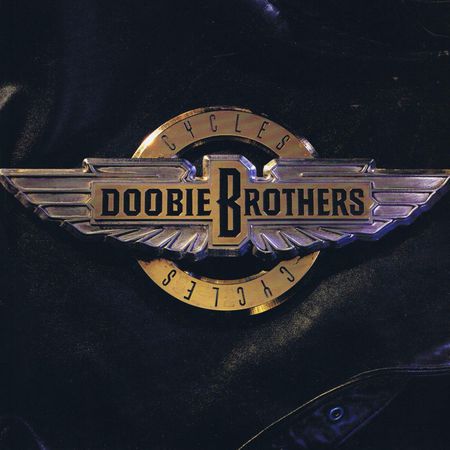
60. The Doobie Brothers – “Cycles”
With The Doobie Brothers’ original lineup back together, “Cycles” was a nice nostalgia trip for diehards. But released in 1989, this was an album where the band was simply trying (and failing) to capture its past glory. Even the hit single “The Doctor” feels like something you’d be embarrassed to catch your dad listening to.
59. The Doobie Brothers – “Brotherhood”
An album that got The Doobie Brothers dropped from their label in 1991. “Brotherhood” is bad. Like, really bad.
58. Tyrannosaurus Rex – “My People Were Fair and Had Sky in Their Hair…But Now They’re Content to Wear Stars on Their Brows”
Let’s come right out and say it. Each album Marc Bolan made as Tyrannosaurus Rex is rather forgettable. And if you’re wondering why the band never caught on in its pre-T. Rex days, here’s Exhibit A. “My People Were Fair and Had Sky in Their Hair…” is a weird record. Intriguing, but baffling in what Bolan’s direction was.
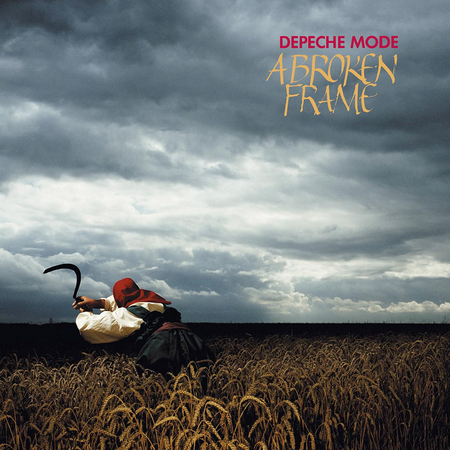
57. Depeche Mode – “A Broken Frame”
Depeche Mode took a darker turn with its second album and the results were less satisfying. Written entirely by Martin Gore after the departure of Vince Clarke, it’s not surprising that the band didn’t return to some of Gore’s musical ambitions after this one. “A Broken Frame” is big on ideas but lackluster in execution.
56. The Doobie Brothers – “Sibling Rivalry”
The Doobie Brothers most forgettable album in that it’s not the worse and it’s nowhere near the best. It also arrived nine years after “Brotherhood” but wasn’t much of a comeback effort. If you’re into trivia, it’s the only Doobies album to feature vocals from Keith Knudsen and John McFee. So, there’s that.
55. Tyrannosaurus Rex – “Prophets, Seers & Sages: The Angels of the Ages”
Tyrannosaurus Rex’s second album was much of the same experimental, hippie folk from Marc Bolan. Just a slightly less jarring version of it.
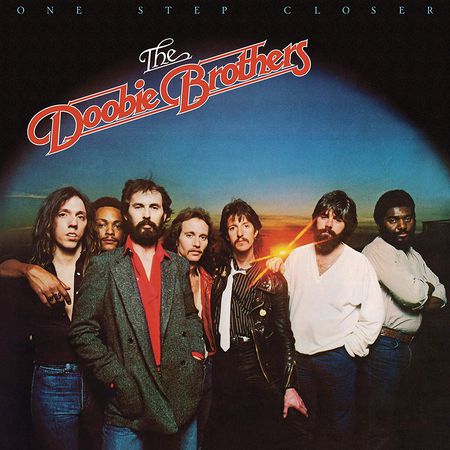
54. The Doobie Brothers – “One Step Closer”
There are two ways to look at “One Step Closer” – as a complete disappointment or just a mild one. We’re going with the former. To think, this album came after the Grammy-winning “Minute by Minute.” Maybe that was the problem. It would be a monumental task for “One Step Closer” to live up to its predecessor. But that’s no excuse for it lacking inspiration and only having one sort of hit. Truth be told, “One Step Closer” isn’t quite as bad in retrospect. But it’s definitely the album fans of The Doobie Brothers point to when they say they liked the band better before Michael McDonald.
53. Whitney Houston – “Just Whitney”
Whitney Houston’s worst album is slickly produced. But it’s ultimately a boring attempt to modernize her sound with the hip-hop soul of the early 2000s. “Just Whitney” isn’t necessarily bad. It just doesn’t feel like a Whitney album and failed to live up to its R&B-heavy predecessor “My Love Is Your Love.”
52. Depeche Mode – “Delta Machine”
Some fans have mixed feelings about the Depeche Mode albums produced by “Ben Hillier.” With “Delta Machine,” things never really hit their stride. It’s an album packed with soul, but sometimes borders on self-indulgent.
51. The Doobie Brothers – “The Doobie Brothers”
The Doobie Brothers’ debut album is pretty raw. If you want to be mean, you could say they sound like a lesser version of The Eagles or The Allman Brothers Band. But that’s not totally fair. “The Doobie Brothers” shows promise, especially with Tom Johnston’s songwriting. But the band was an album away from smoothing out its rough edges in the studio.
50. Tyrannosaurus Rex – “Unicorn”
Bolan improved with every album and “Unicorn” was his first solid effort from start to finish. He was still knee deep in psychedelic folk. But you could get a small sample of the brilliance that would arrive once the band changed its name.
49. Depeche Mode – “Construction Time Again”
Depeche Mode’s third album found the band dabbling in industrial music and some people loved it. In reality, it didn’t suit them. There are some gems on “Construction Time Again,” but several of the songs are overproduced to the point of unlistenable.
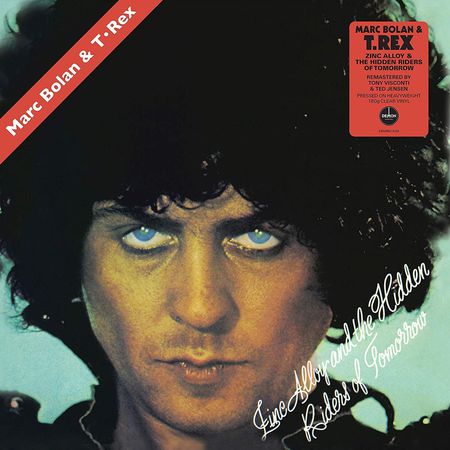
48. Marc Bolan & T. Rex – “Zinc Alloy and the Hidden Riders of Tomorrow”
“Zinc Alloy…” marks what many consider a decline for Marc Bolan after “Tanx.” It’s not nearly as good as its three predecessors, but it was also misunderstood. “Zinc Alloy” finds Bolan moving into dance-music territory. Granted, he would prove much effective on its follow-up, but there are several redeeming qualities here.
47. Whitney Houston – “One Wish: The Holiday Album”
This is about what you’d expect from a great singer having her go at holiday classics, as well as some more modern Christmas tunes. It might have been more enticing to hear Houston do something like this in her prime. Still, it’s nice background music in December.
46. The Doobie Brothers – “World Gone Crazy”
On “World Gone Crazy,” The Doobie Brothers reunited with producer Ted Templeman, but the album surprisingly has a modern vibe for its 2010 release. And at 11 songs, it’s probably the tightest effort form the band’s later days even if the songs aren’t that memorable.
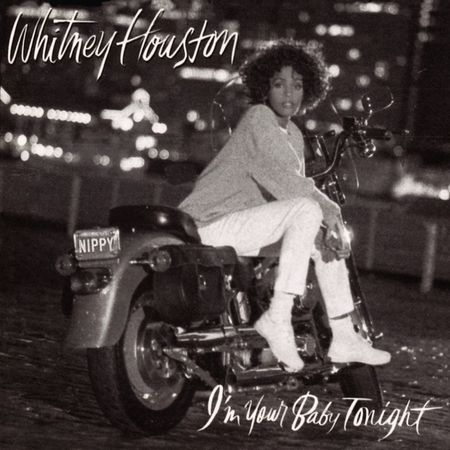
45. Whitney Houston – “I’m Your Baby Tonight”
Whether it was wanting to end talk she was more pop than R&B or a desire to follow the trend of new jack swing, Whitney Houston’s third album was a shock to the system. Where Houston’s voice was the main weapon on her first two stellar albums, “I’m Your Baby Tonight” piles on the sleek production. Critics didn’t take to it in 1990. But the album has aged better than you think, showcasing a versatility in Houston as an artist even when the songs don’t feel as distinct as you might hope.
44. Nine Inch Nails – “Ghosts I-IV”
Upon its release, “Ghosts I-IV” felt like boring background music. It’s remains that to some extent. But, in retrospect, it clearly points towards the excellent work Trent Reznor and collaborator Atticus Ross would do on their film soundtracks. “Ghosts I-IV” is way too long. But it has its alluring moments.
43. The Doobie Brothers – “Southbound”
“Southbound” was pretty much a can’t miss for The Doobie Brothers. The album pairs the band with more contemporary country artists for remakes of hits like “Black Water,” “China Grove” and “What a Fool Believes.” There’s no breaking any ground here. But the country twist on The Doobies’ music feels pretty natural and fun.
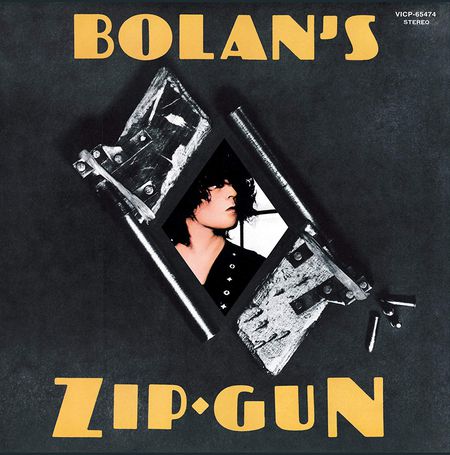
42. T. Rex – “Bolan’s Zip Gun”
T. Rex’s later albums (post “Tanx”) all got a bad rap upon their release. But even the lesser albums in Marc Bolan’s career have aged pretty well. “Bolan’s Zip Gun” is by no means a classic. But there’s a delightful, funk and dance-influenced bounce to it that borders on irresistible.
41. Whitney Houston – “I Look to You”
We didn’t know it at the time, but “I Look to You” would wind up being Whitney Houston’s final album. Her first album since the disappointing “Just Whitney” matches her up with better producers that give us a quality collection of songs (“Million Dollar Bill” still grooves) that make you wonder what could have been.
40. Depeche Mode – “Exciter”
“Exciter” is one of several post-“Violator” albums that gets unfairly treated by some Depeche Mode fans. It very much fits with the style of producer Mark Bell (Bjork) and is quite refreshing in its almost Radiohead-like tendencies of the early 2000s.
39. T. Rex – “Futuristic Dragon”
At the time of its release (1976), “Futuristic Dragon” was essentially the last straw for many fans when it came to T. Rex. It was very strange and arrived on the heels of two other disappointing albums. But just like those efforts, “Futuristic Dragon” is much better in hindsight. It’s Marc Bolan’s high-concept album. That’s not to say it’s his “Ziggy Stardust” in terms of quality. But T. Rex’s 11th album is packed with soul and foreshadowed the full-on comeback effort Bolan would release a year later.
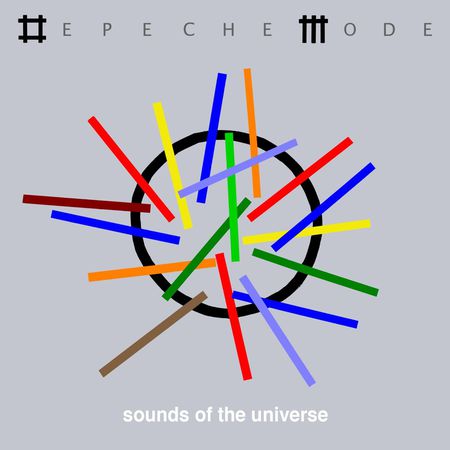
38. Depeche Mode – “Sounds of the Universe”
Its predecessor, “Playing the Angel,” modernized Depeche Mode’s sound in the best way possible. One might have expected Depeche Mode to go back to that well. Instead, the band goes back into early-1980s mode, only with more refined production. It doesn’t have the natural appeal of the band’s best work, but “Sounds of the Universe” proved Depeche Mode was still capable of surprising us.
37. Whitney Houston – “The Preacher’s Wife”
The other Whitney Houston soundtrack and maybe even the more agreeable of the two. “The Bodyguard” reached for the stars. When it worked it was thrilling. When it didn’t, it was rather forgettable. Meanwhile, “The Preacher’s Wife” is modest, but one solid gospel album from start to finish.
36. The Doobie Brothers – “Livin’ on the Fault Line”
Sandwiched between The Doobie Brothers’ two monster albums, “Livin’ on the Fault Line” saw Tom Johnston leaving the band early in the recording and Michael McDonald becoming the leader. The album is actually a decent mix of early Doobies and the more soulful sound that would take over with 1978’s “Minute by Minute.” “Livin’ on the Fault Line” is easily the album from the Michael McDonald era most beloved (or tolerated) by fans of the Doobies’ early work.
35. Tyrannosaurus Rex – “A Beard of Stars”
The moment where Marc Bolan started to turn into the artist that would make T. Rex one of the greatest bands of its time. “A Beard of Stars” is the best album by Tyrannosaurus Rex. Sure, some of the hippie-folk is still there. But Bolan began to move towards rock music and, more specifically, the electric guitar work that would drive his future output as T. Rex.

34. Nine Inch Nails – “The Slip”
As it turns out, “Ghosts I-IV” was simply a warmup for the next phase of Trent Reznor’s Nine Inch Nails. “The Slip” is a more fully-realize project, featuring some of Reznor’s best production work in years. His partnership with Atticus Ross and Alan Moulder was truly becoming a force, if not all the way there yet.
33. Whitney Houston – “The Bodyguard”
Here’s the thing about “The Bodyguard” soundtrack. You probably aren’t listening to the second half ever again. It’s that forgettable. But the front side of Whitney Houston’s monster soundtrack (it sold more than 45 million copies worldwide) is as blockbuster as it gets. It’s hit single after hit single. At this point, Whitney Houston and her music were larger than life. There was no stopping her.
32. Nine Inch Nails – “Hesitation Marks”
“Hesitation Marks” was well-received upon its release as a throwback to the dejected Reznor of “Pretty Hate Machine” and “The Downward Spiral.” Yet, “Hesitation Marks” is decidedly less aggressive than Reznor’s early work and well-polished. For or non-NIN fans, this might be a decent entry point, considering it features some of the most accessible songs of Reznor’s career.
31. Depeche Mode – “Spirit”
For some, a small part of the appeal of Depeche Mode was that the band rarely, if ever, politicized its music. That changed on 2017’s “Spirit.” Sonically, it’s a solid album. But the critiques on society were sure to bring eye-rolls from some. But it’s hard not to admire the willingness of the band to evolve and reach for something different at a time when the members clearly felt inspired to do so.
30. Nine Inch Nails – “Bad Witch”
Album or EP? We’ll take Trent Reznor’s word for it that “Bad Witch” is an album, and the third and most ambitious of a trilogy of releases. Nine Inch Nails further expanded its brand of industrial rock, which wound up drawing comparisons to David Bowie’s excellent final album “Blackstar.” That’s not surprising considering Reznor and Bowie were kindred spirits.
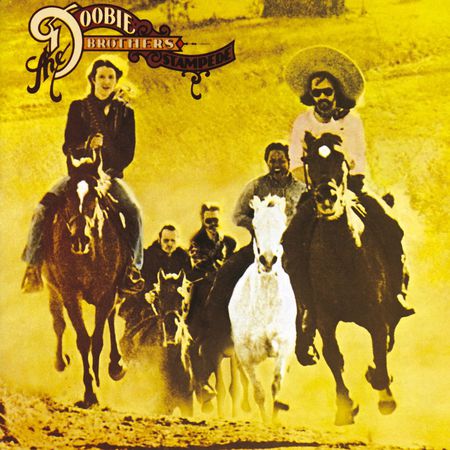
29. The Doobie Brothers – “Stampede”
It’s easy to see people loving or hating “Stampede.” There are those that view it as The Doobie Brothers best album. It’s certainly one of the band’s most creative, bringing elements of funk and country rock into its sound. And “Take Me in Your Arms (Rock Me a Little While)” is still a killer record. Is “Stampede” boring at times? Definitely, especially if you’re longing for The Doobies’ harder brand of old fashioned rock and roll.
28. Depeche Mode – “Ultra”
So dark and gloomy. “Ultra” turned off some Depeche Mode fans. But if you like it, odds are you love it. It’s a hard hitting album that’s moody and engaging. There’s a lot to unpack here, including the album’s attachment to the trip-hop that was emerging in the late 1990s. Bottom line: “Ultra” takes you places, most of them quite astonishing.
27. The Doobie Brothers – “Taking It to the Streets”
The first Doobie Brothers album to feature Michael McDonald on lead vocals was bound to draw a mixed reaction. With Tom Johnston on his way out, the band needed a direction. That came from McDonald, which makes “Taking It to the Streets” lean towards pop and soft rock territory. This was clearly the end of an era, as things would get even more pop-oriented on “Livin’ on the Fault Line” and, of course, “Minute By Minute.” But there’s no denying “Taking It To The Streets” finds the band reaching a new peak in terms of melody.
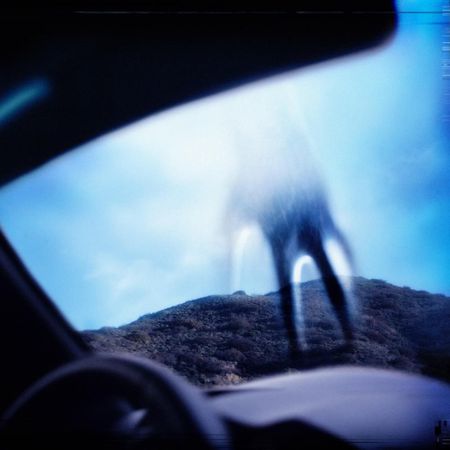
26. Nine Inch Nails – “Year Zero”
Even for Trent Reznor, “Year Zero” is kind of out there. It’s a concept album critiquing United States government, set in the year 2022. Admittedly, the high-concept can be hard to wrap your head around. But sonically, “Year Zero” is on point almost from start to finish. For Reznor diehards, it’s the kind of crazy album that makes him feel so larger than life.
25. Depeche Mode – “Playing the Angel”
“Playing the Angel” is the sound of Depeche Mode going modern. The addition of producer Ben Hillier helped build some menacing sounds, adding even more bells and whistles to the band’s sound. It’s also the first time you could really feel Dave Gahan’s impact as songwriter and performer. “Playing the Angel” doesn’t push boundaries like Depeche Mode’s finest work. But it finds the band fitting in nicely with the best electronic-driven indie-rock of the early to mid-2000s.
24. The Doobie Brothers – “What Were Once Vices Are Now Habits”
The album with “Black Water,” and the one that came after what many consider The Doobie Brothers’ finest album in “The Captain and Me.” “What Were Once Vices Are Now Habits” isn’t as revered as its predecessor. But it may be more enticing in its lack of commercial ambition. “What Were Once Vices Are Now Habits” remains a fan favorite and an essential piece of The Doobies peak 1970s creative period.
23. T. Rex – “Dandy in the Underworld”
There’s a great chance “Dandy in the Underworld” would have been a comeback album for T. Rex in 1977 had Marc Bolan not died in a car crash later that year. It marks a return to the band’s peak glam rock days with a clear influence from the emerging punk rock scene. Most had written Bolan off before the release of “Dandy in the Underwold” after a string of disappointing albums. In retrospect, it’s one of his finest hours.
22. Depeche Mode – “Speak & Spell”
Obviously, Depeche Mode would go on to make more complex albums. Everything after the band’s debut “Speak & Spell” was bigger. But that’s what makes the album such a miracle of early 1980s synthpop. Depeche Mode didn’t need a big budget to make the kind of enticing electronic music Kraftwerk laid the blueprint for. Yes, the song’s sound somewhat dated, but “Speak & Spell” stands as one of the best and most important pop debuts of the 1980s.
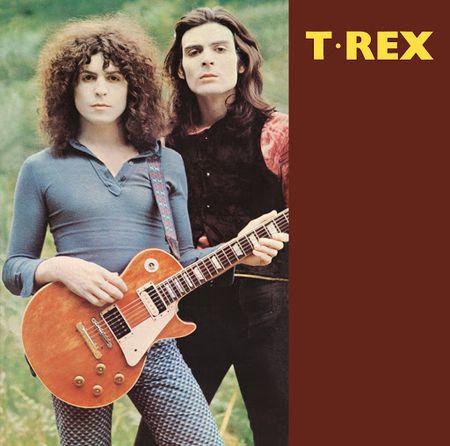
21. T. Rex – “T. Rex”
The sound of everything coming together for T. Rex. By the time of the name change and the release of “T. Rex,” Bolan had made the transition from hippie to rock star. In many ways, the album feels like just a precursor to the amazing glam rock that would arrive on “Electric Warrior.” But make no mistake, while raw, “T. Rex” is the foreshadowing of something special with moments that reach pure genius.
20. Whitney Houston – “My Love Is Your Love”
“My Love Is Your Love” marked Houston’s first proper studio album in eight years. Her soundtracks had kept her a huge name. But “My Love Is Your Love” was the true shift of Houston’s sound. The album came packed with all-star R&B producers (Wyclef Jean, Rodney Jerkins, Missy Elliott). The hip-hop influence, at a time when the genre was owning the charts, was clear. It doesn’t always make room for Houston’s distinct voice. But the songs, from start to finish, pop. Houston could have, and should have, kept making albums like this for years to come.
19. Depeche Mode – “Some Great Reward”
Not everything on “Some Great Reward” works. But the songs that do work rank among the most essential in Depeche Mode’s career. The album marked the end of the band’s first chapter creatively and it did so in epic fashion. Tracks like “People Are People” and “Master and Servant” became instant fan favorites. “Some Great Reword” also foreshadowed the brilliant mix of synth-pop and industrial that would become a true knockout on 1986’s “Black Celebration.”
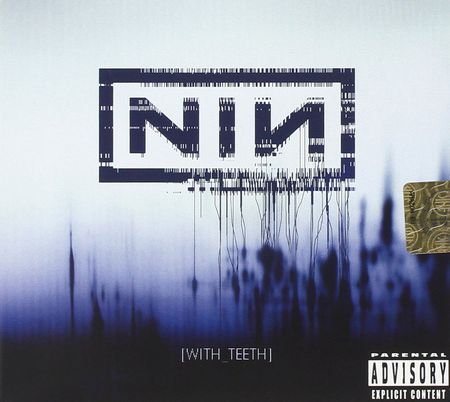
18. Nine Inch Nails – “With Teeth”
After the release of 1999’s “The Fragile,” Trent Reznor got sober. It took six years for Nine Inch Nails’ next album to arrive. But it was worth the wait. It turns out, a sober Reznor meant tighter song structures and one of his most cohesive (and refined) albums yet. The songs on “With Teeth” aren’t as epic or consuming as the music on Reznor’s previous efforts. But it’s hard not to listen to a song like “The Hand That Feeds” and realize Reznor was also as good at creating straight-forward alternative rock as anyone.
17. The Doobie Brothers – “Toulouse Street”
The difference between The Doobie Brothers first album and “Toulouse Street” was like night and day. The band had clearly smoothed out all of its rough edges, as evident by the catchy first track “Listen to the Music.” “Toulouse Street” marks the entry point for most Doobie fans and rightfully so. The album’s guitars and southern blues sound (see “Disciple”) would earn The Doobie Brothers comparisons to The Allman Brothers in the best ways imaginable.
16. Depeche Mode – “Songs of Faith and Devotion”
“Songs of Faith and Devotion” should have been a mess. David Gahan had seemingly morphed into a grunge rocker who wanted the band to embrace a more guitar-driven sound. Meanwhile, Depeche Mode was seemingly out of place in an alternative-rock world. But “Songs of Faith and Devotion” works extremely well, sounding like a Depeche Mode album while bringing in some amazing sonic flourishes from co-producer Flood. It seemed an impossible task at first, but “Songs of Faith and Devotion” proved a worthy follow-up to 1990’s masterful “Violator.”
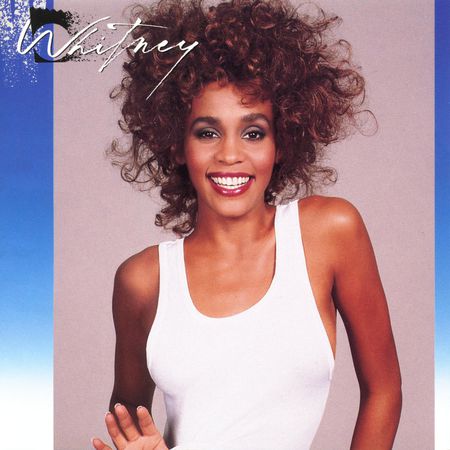
15. Whitney Houston – “Whitney”
The success of Whitney Houston’s first album was a bit of a double-edged sword. The multi-platinum sales and No. 1 singles never came at the expense of Houston’s amazing voice. In fact, it was the key instrument in propelling tunes like “Saving All My Love for You” and “Greatest Love of All” to the top of the charts. However, its sequel, titled “Whitney,” came in the middle of the 1980s pop explosion. Clive Owens and Arista went big, tapping into the pop elements of the first album to give “Whitney” a more glossy sound. Financially, the payoff was huge, even if Houston’s voice, at times, took a backseat to the slick production. At the time, it was seen as formulaic. But obviously, fans didn’t care. After going nine-times platinum, “Whitney” felt like Houston’s “Thriller.”
14. The Doobie Brothers – “The Captain and Me”
If you took a poll of Doobie fans as to what the band’s best album is, “The Captain and Me” would probably win. The classics are certainly there with “Long Train Runnin,’” “Without You” and “China Grove.” “The Captain and Me” hits the sweet spot, for the first time, between Tom Johnson’s rock anthems and Patrick Simmons’ country vibes. It’s the best of both worlds and, arguably, the best The Doobie Brothers sounded in the pre-Michael McDonald days for sure. Speaking of which…
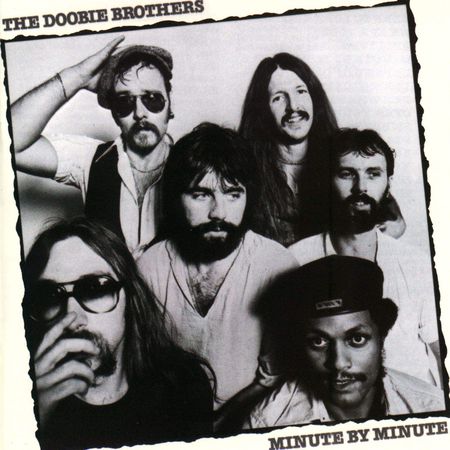
13. The Doobie Brothers – “Minute by Minute”
Let the debate rage on! “Minute by Minute” was a monster album at the peak of The Doobie Brothers’ Michael McDonald era that sat on top of the charts for five straight weeks. It went on to win the Grammys for Song and Record of the Year, for “What a Fool Believes.” But that doesn’t mean everyone likes it. The pop-driven soft rock of Michael McDonald had consumed the band, removing many of the traits fans loved about the Tom Johnston-led era. Still, “Minute by Minute” is a brilliantly produced album and one of the peak examples of blue-eyed soul for its time.
12. T. Rex – “Tanx”
It would be impossible for “Tanx” to live up to its two predecessors, “Slider” and “Electric Warrior.” But Marc Bolan wasn’t trying to do that. While those albums wasted no time diving into the punch of glam rock at every turn, Bolan is far more musical on “Tanx,” which makes it a more challenging album. But it’s also, arguably, his most cohesive effort. It’s a tight (and short) album that flows brilliantly, continuing T. Rex’s golden era.
11. Nine Inch Nails – “The Fragile”
Following “The Downward Spiral,” “The Fragile” was seen as a disappointment…at first. The album was more melodic and concept focused. But over time, it’s become one of, if not the most beloved Nine Inch Nails album. The question is why? Even as nu metal was taking hold of the mainstream, NIN still sounded unlike anything else that was out. Sonically (with a mix of analog and digital) it is, perhaps, the most ambitious thing Reznor has ever done. It feels futuristic, highly personal and serves best example of Reznor’s genius.
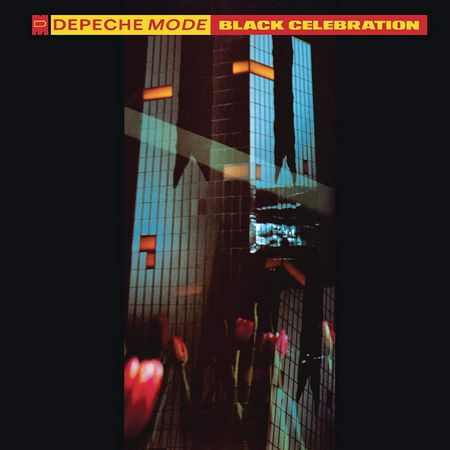
10. Depeche Mode – “Black Celebration”
The sound of Depeche Mode maturing and embarking on the next (and more creative) chapter of the band’s career. “Black Celebration” is a stunner of an album that was a massive leap in terms of creativity and sound. It simply sounds bigger than anything Depeche Mode had done before. Yet, as for intense as “Black Celebration” sounds and feels, it is methodical in its delivery. There are ballads everywhere. Ultimately, “Black Celebration” is the sound of a band taking its time and perfecting the little nuances fans would find alluring for years to come.
9. The Notorious B.I.G. – “Life After Death”
To say “Life After Death” was like getting a double dose of “Ready To Die” is suggesting the ultimate New York rap album. In some ways, that’s exactly what “Life After Death” is. It’s a double-album, so there’s room for filler, depending on how you feel about the Mad Rapper and crudeness of “Nasty Boy.” But you could make the case, rather easily, that “Life After Death” is rap’s greatest talent at his lyrical peak. Add that to the fact that Puff Daddy and the Hitmen were firing on all cylinders and you have the peak of the Bad Boy era. “Life After Death” mixes the pop appeal of songs like “Mo Money Mo Problems” and “Hypnotize” with vicious lyrical tirades like “Kick in the Door,” “Notorious Thugs” and “”Long Kiss Goodnight.” The album and its title sadly foreshadowed Biggie’s downfall. Maybe that’s why he raps every verse like it’s his last.
8. Depeche Mode – “Music for the Masses”
“Music for the Masses” was a bold title for Depeche Mode’s sixth album. But it fits. “Music for the Masses” made the band as big as it had ever been. Just about every song here soars with a sound that feels larger than life. Songs like the amazing opener “Never Let Me Down Again,” “Strangelove” and “Behind the Wheel” would become radio mainstays. This was a new peak for Depeche Mode, a highpoint for 1980s new wave and one of the most enticing synth-pop albums of all time.
7. T. Rex – “The Slider”
“The Slider” is more than just “Electric Warrior” 2.0. Marc Bolan’s amps up the guitars and backing vocals, giving the album a more bombastic and soulful sound. In some places, the highs (including a pair of chart-topping singles in the UK) feel as good, if not better than anything Bolan ever did. Not quite as thrilling, groundbreaking or fully realized as “Electric Warrior,” “The Slider” is still the most enchanting thing Bolan ever produced and a creative masterpiece.
6. Nine Inch Nails – “Pretty Hate Machine”
“Pretty Hate Machine” is an amazing album whose quality is only dwarfed by its influence. It’s the album that made industrial rock a thing, changing the landscape of alternative rock moving forward. The alternative rock of the 1990s could have been pretty one dimensional, but like some of the other great indie-rock acts of the late 1980s, Reznor was taking things to new places and new heights. These songs were one of a kind and a collection that could only be topped by Reznor himself the next time around.
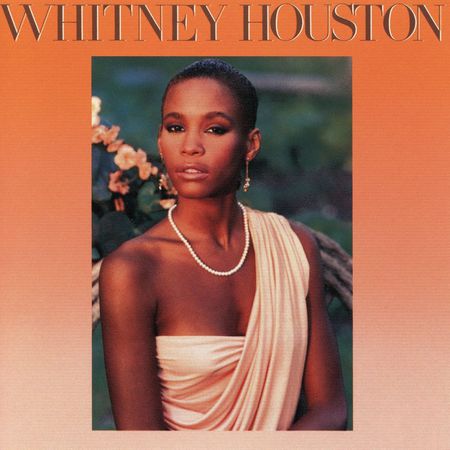
5. Whitney Houston – “Whitney Houston”
Whitney Houston’s debut album was the start of the modern pop-diva era. Everything from Mariah Carey, Celine Dion, Beyonce and Christina Aguilera would follow suit. Heck, you could even say Adele is still following Houston’s lead. It’s hard to imagine a more finely tuned hybrid of pop and R&B than “Whitney Houston.” The ballads are true showstoppers, with production of the highest order built around Houston’s amazing vocal performance, one of the best of any album in pop history. And yet, it’s not all slow burners, as everyone who danced the night away to “How Will I Know” is aware of. Given Houston’s talent, her debut had all the potential in the world. The fact it lived up to the hype marks an amazing moment in pop music history.
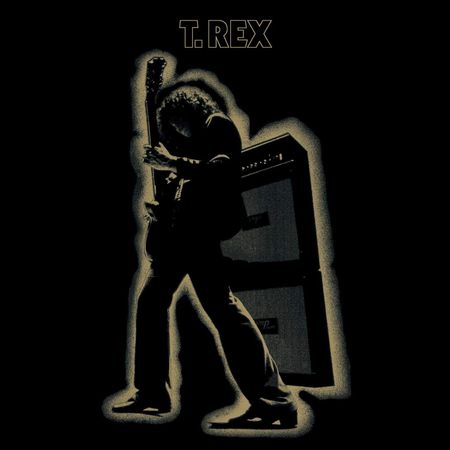
4. T. Rex – “Electric Warrior”
As infectious a post-Beatles rock record as you will ever hear. “Electric Warrior” is the glam rock album to end all glam rock albums, mainly because it was most responsible for establishing the glam scene David Bowie, New York Dolls and others would follow. Bolan’s music radiates with sexuality and pure joy. “Electric Warrior” is an album so brilliant in its execution that it would go on to influence everyone from Queen and Prince to Cheap Trick and KISS.
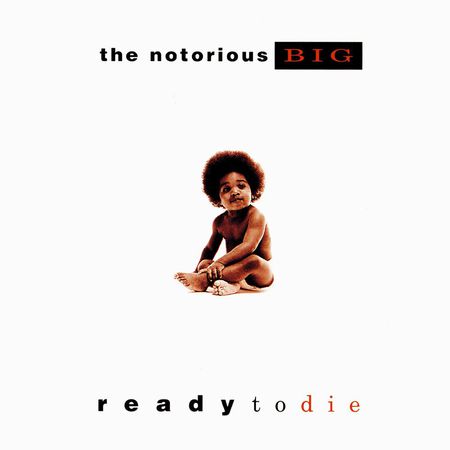
3. The Notorious B.I.G. – “Ready To Die”
New York rap music had already gotten Nas’ “Illmatic” and the Wu-Tang Clan’s “Enter the Wu-Tang (36 Chambers).” But Biggie Smalls was a different kind of beast. His raw, slick flow and clever wordplay was like a combination of Kool G Rap and Slick Rick with the forceful nature of a young Ice Cube. If it were up to Biggie, “Ready to Die” would have been a hardcore rap album through and through. The album certainly begins like that with an onslaught of hard-hitting tracks. But Bad Boy Records chief Puff Daddy had bigger ambitions, pushing for “Juicy” and its Mtume sample to be the album’s centerpiece. It was the hit Biggie needed to entice listeners to his monumental talent. “Ready To Die” is pitch perfect, a debut album (hip hop or otherwise) for the ages.
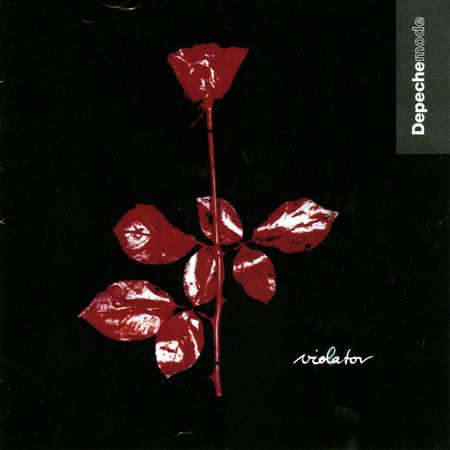
2. Depeche Mode – “Violator”
It felt like after “Music for the Masses” and the phenomenal live album “101” that Depeche Mode had reached its peak. Then came the 1990s and “Violator.” The album’s first two singles – “Personal Jesus” and “Enjoy the Silence” – marked huge leaps forward. An album of thrilling material followed. The big synth-pop anthems were still present. But Depeche Mode was also getting darker and more compelling. The merging of synth-pop, alternative rock, goth and other genres on “Violator” bubbles towards the peak of electronic music.
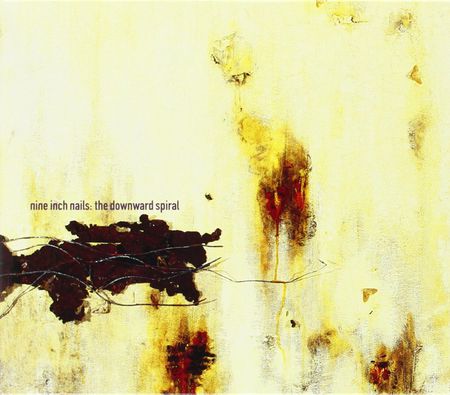
1. Nine Inch Nails – “The Downward Spiral”
To say “The Downward Spiral” is the peak of industrial rock is to downplay just how special it is. It stands as one of the most daring and well-executed alternative rock albums of all time, that’s been copied by numerous acts ever since. The meaning behind the songs is quite clear. Trent Reznor’s mood is bleak, captured by a narrator who is slowly working his way towards suicide. Sonically, Reznor was creating new benchmarks of the industrial genre with tracks like “March of the Pigs” and “Closer.” This is music that pulls you in before pummeling the listener with its jarring nature. What makes “The Downward Spiral” timeless is its emotional depth, apparent by the fact that Johnny Cash could have a late career renaissance covering the darkest of dark closer “Hurt.” “The Downward Spiral” is a menacing masterpiece.